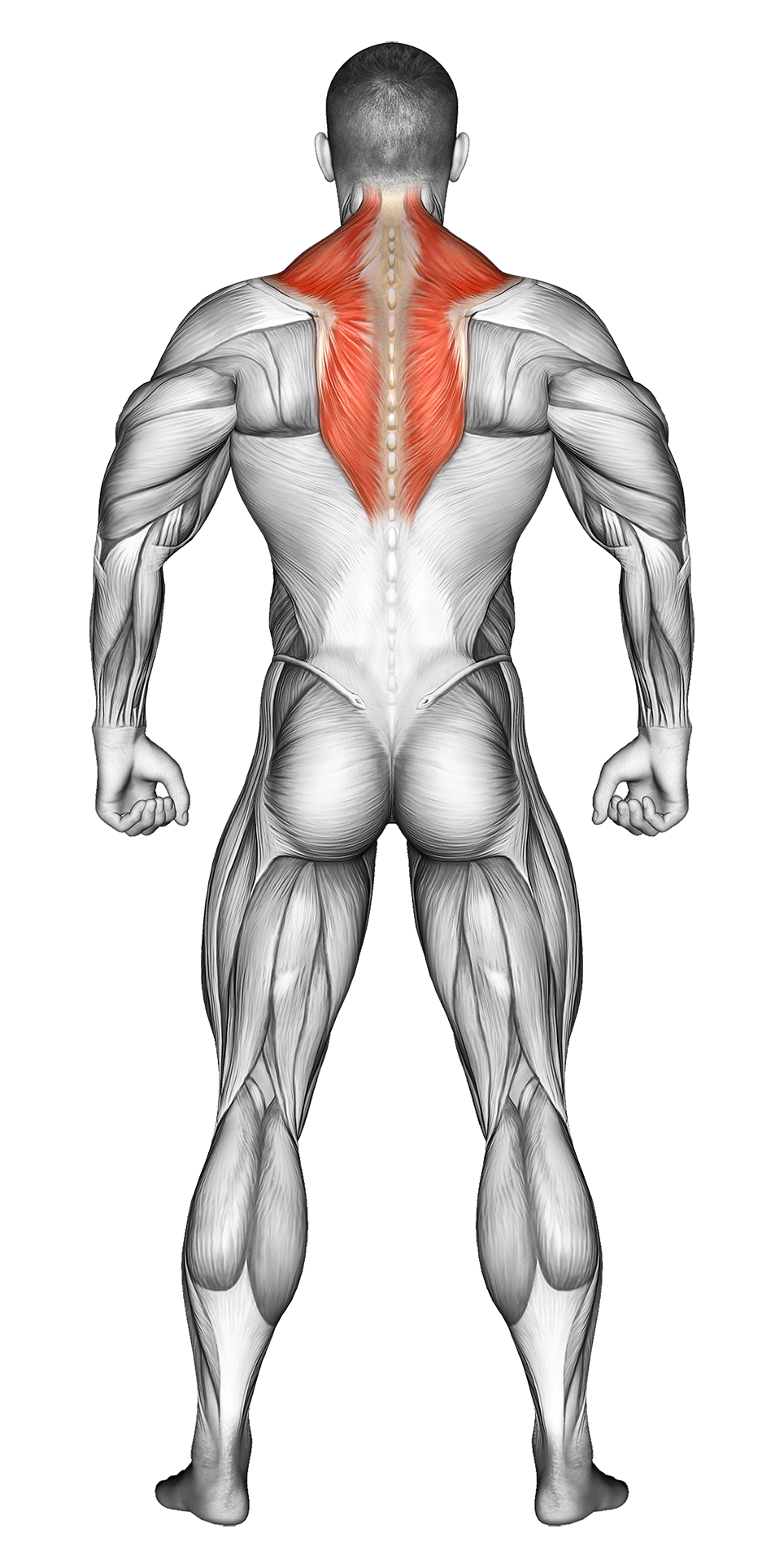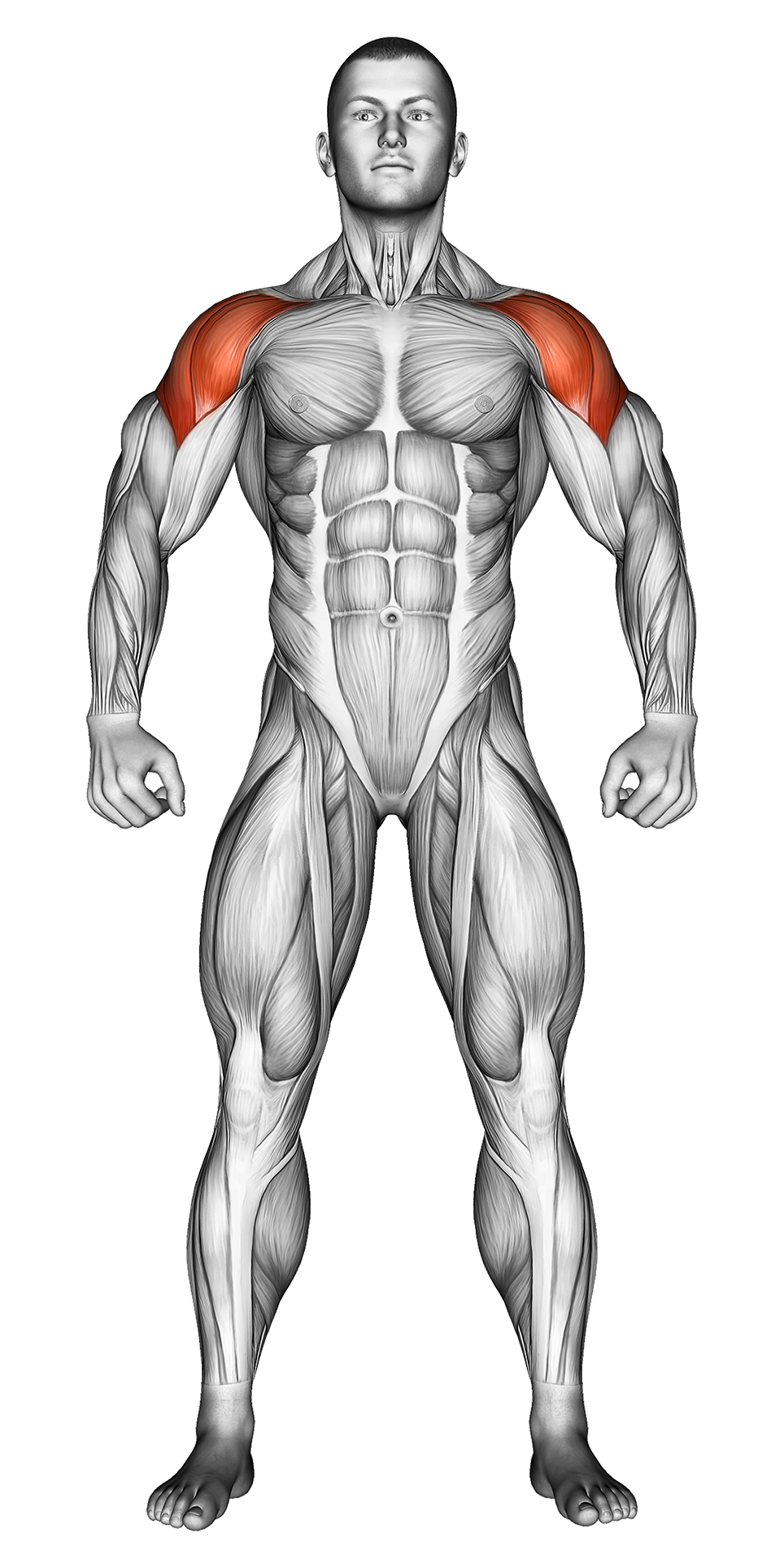Pike Push Ups: Video Tutorial & Exercise Guide
| Workout | Pike Push Ups |
| Primary Muscle Group | Shoulders |
| Secondary Muscle Group | Chest, Traps |
| Equipment Required | Bodyweight |
| Force Type | Push |
| Mechanics | Compound |
| Exercise Type | Strength |
| Difficulty | Beginner |
Pike Push Ups: Video Tutorial & Exercise Guide
Secondary Muscles

Chest

Traps
How to do Pike Push Ups – Step-by-Step Guide
- Step 1: Begin in a downward dog position with your hands and feet on the ground, hips raised high. Your arms should be shoulder-width apart, and your legs should be straight with a slight bend in your knees.
- Step 2: Engage your core and keep your back straight. Lower your head down toward the floor by bending your elbows. Your arms should form an inverted “V” as you move downward.
- Step 3: Continue lowering your head until it almost touches the floor, keeping control of the movement to avoid collapsing.
- Step 4: Push through your palms to extend your elbows and raise your body back to the starting position, keeping your hips high.
- Step 5: Repeat for the desired number of repetitions, focusing on maintaining form and control throughout the exercise.
Pike Push Up Overview
The Pike Push Up is a bodyweight exercise that targets the shoulders, specifically the anterior (front) deltoids, while also engaging the triceps and upper chest. By performing the movement with the hips raised and arms in an inverted "V" shape, you place more emphasis on the shoulders compared to a traditional push-up.
This exercise is highly effective for building shoulder strength and endurance and can serve as a progression toward more advanced movements such as handstand push-ups.
Benefits of Pike Push Ups
Pike Push Ups primarily target the shoulders, helping to build strength, endurance, and muscle definition in the deltoids. The movement also engages the core and upper chest, making it a great exercise for overall upper-body strength. Since it’s a bodyweight exercise, it can be performed anywhere without equipment, making it accessible for all fitness levels.
Additionally, this exercise improves balance and coordination, as you must stabilize your body throughout the movement.
Pike Push Ups: Pro Tips & Advanced Techniques
Focus on keeping your hips high and your core engaged throughout the movement to maintain proper form. Lower your head slowly and with control, avoiding any sudden or jerky motions. To increase difficulty, elevate your feet on a bench or platform to increase the angle and place more load on your shoulders. You can also add repetitions or slow down the lowering phase to increase time under tension.
Progression Plan for Pike Push Ups
| Level | Sets | Reps | Progression Tips |
|---|---|---|---|
| Beginner | 2-3 | 8-10 | Focus on mastering form with bodyweight only before progressing to elevated variations. |
| Intermediate | 3 | 10-12 | Elevate your feet on a platform to increase the difficulty, while maintaining control of the movement. |
| Advanced | 4 | 12-15 | Use a higher platform or slow down the eccentric phase to increase time under tension and maximize muscle engagement. |
Frequently Asked Questions (FAQs) of Pike Push Ups
What muscles do Pike Push Ups target?
Pike Push Ups primarily target the shoulders (deltoids) while also engaging the triceps, upper chest, and core.
Can beginners perform Pike Push Ups?
Yes, beginners can start with a modified version by reducing the range of motion or doing the movement from the knees until they build enough strength.
How can I make Pike Push Ups more challenging?
Elevate your feet on a platform to increase the angle of your body, or add reps and slow down the eccentric phase to increase the intensity.
What common mistakes should I avoid during Pike Push Ups?
Avoid letting your hips drop or using your neck to press up. Focus on using your shoulders and keeping your hips raised throughout the movement.
How often should I include Pike Push Ups in my routine?
Pike Push Ups can be performed 1-2 times per week as part of your upper body or shoulder workout to build strength and endurance.
Share
